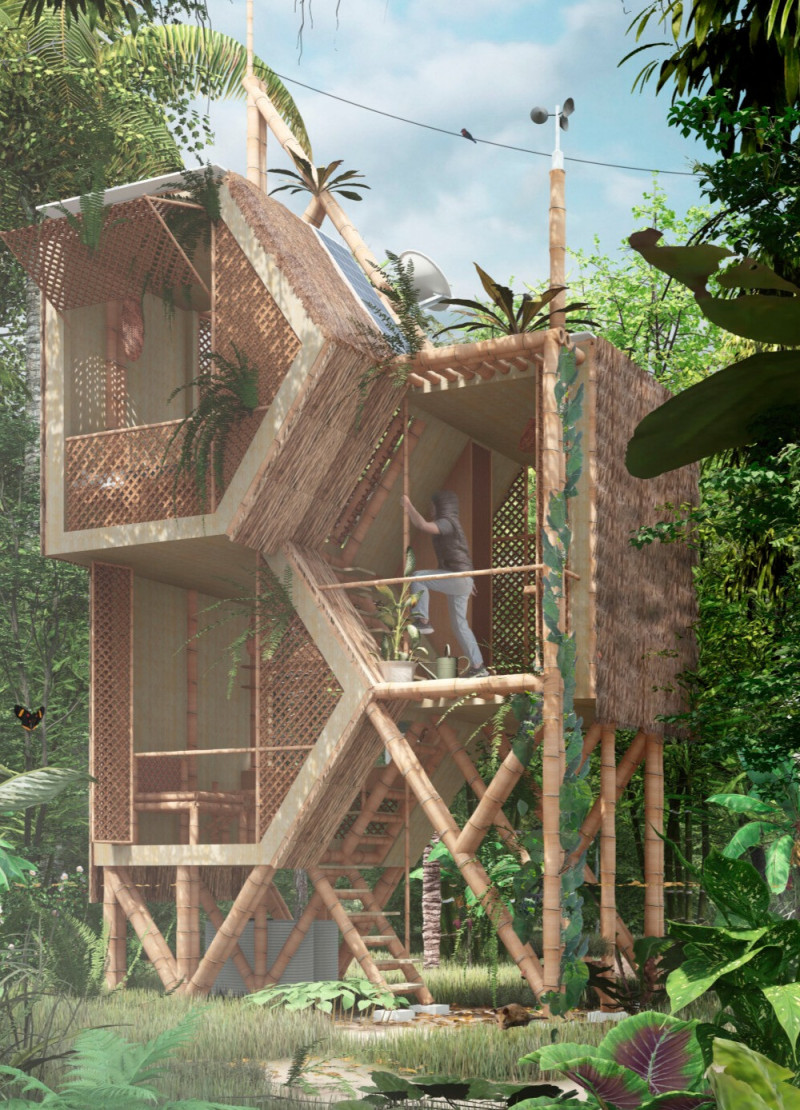5 key facts about this project
The building functions as a multipurpose space, catering to the diverse needs of its occupants while fostering social interaction. Architectural plans outline a seamless flow between various zones, allowing for flexible usage that can accommodate both individual and communal activities. From the outset, it is evident that the design encourages a reimagining of traditional spatial dynamics, where openness and interaction are prioritized.
The materials selected for this project reflect a careful consideration of their functional properties and environmental impact. Key materials include reinforced concrete, glass, and sustainably sourced timber. Reinforced concrete serves as the primary structural backbone, providing durability and resilience, while expansive glass facades facilitate natural light, creating an uplifting atmosphere. The use of timber throughout not only enhances aesthetic warmth but also signifies a commitment to sustainability by opting for materials that are renewable and low in carbon footprint.
Unique design approaches are evident in the building's form and layout. The architecture incorporates vertical greenery, which acts as both an aesthetic element and a functional feature, promoting biodiversity and improving local air quality. This integration of nature within the architectural framework manifests an important shift towards biophilic design principles. The roof garden adds another layer of functionality, serving as both a recreational space for inhabitants and a habitat for local wildlife, blurring the lines between the built environment and natural ecosystem.
The carefully considered architectural sections reveal a strategic approach to ventilation and thermal regulation, utilizing passive design strategies that enhance energy efficiency. The interplay of light and shadow is manipulated through the design, not only optimizing natural illumination but also creating visually engaging spaces within the structure. Each element—from the choice of materials to the configuration of spaces—mirrors a coherent design ethos that prioritizes longevity, usability, and the well-being of its users.
As one explores the intricate details of this architectural design, it becomes apparent that the project stands as a testament to thoughtful and deliberate planning. The synthesis of aesthetic qualities and practical functionalities invites the community to experience the space in diverse ways, engaging with it emotionally and physically. The architecture’s commitment to sustainability, reflected in its materiality and design choices, aligns with a broader movement towards creating spaces that support both human activity and ecological health.
In conclusion, this project embodies salient architectural ideas that seek to redefine how spaces are perceived and interacted with within urban environments. Interested readers are encouraged to explore the project presentation further, examining architectural plans, sections, and detailed designs to gain a deeper understanding of the innovative concepts at play within this architectural endeavor.


 Norberth Aristizabal Marin,
Norberth Aristizabal Marin, 























